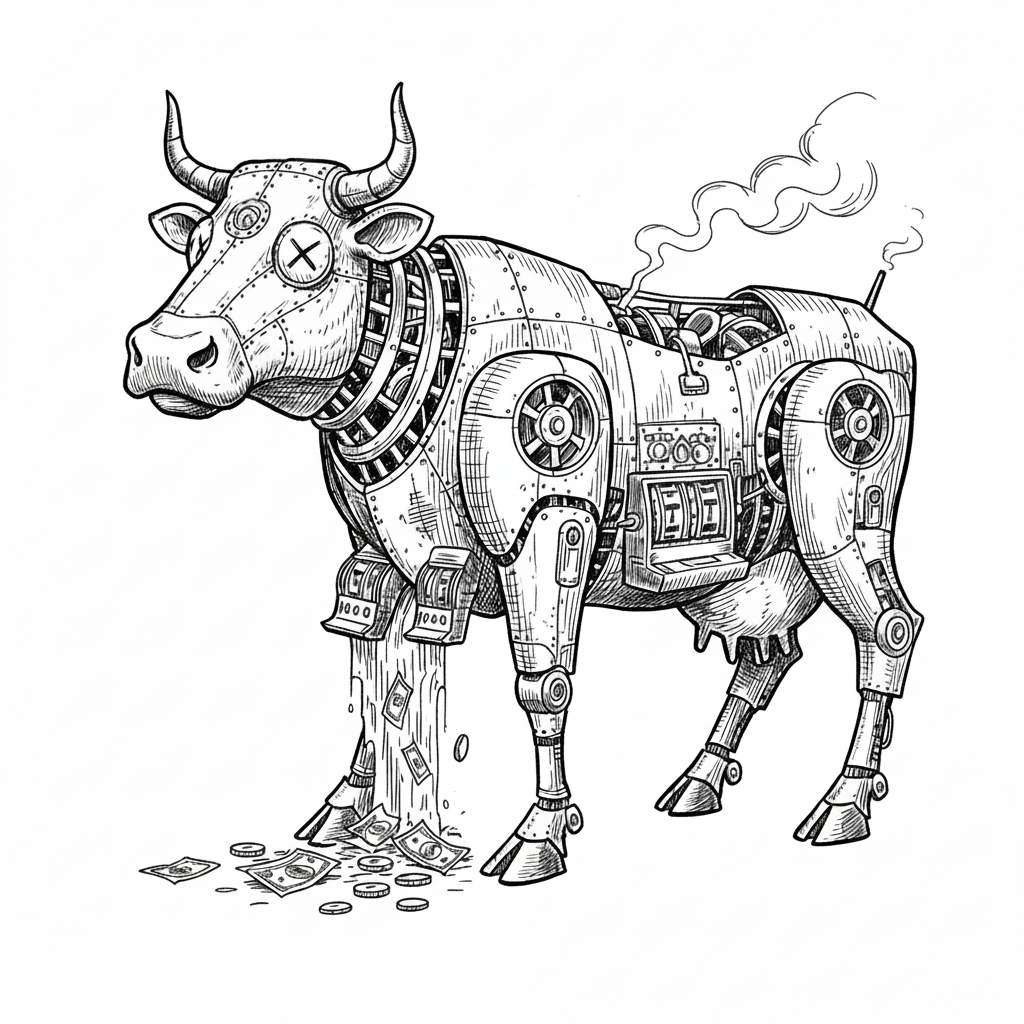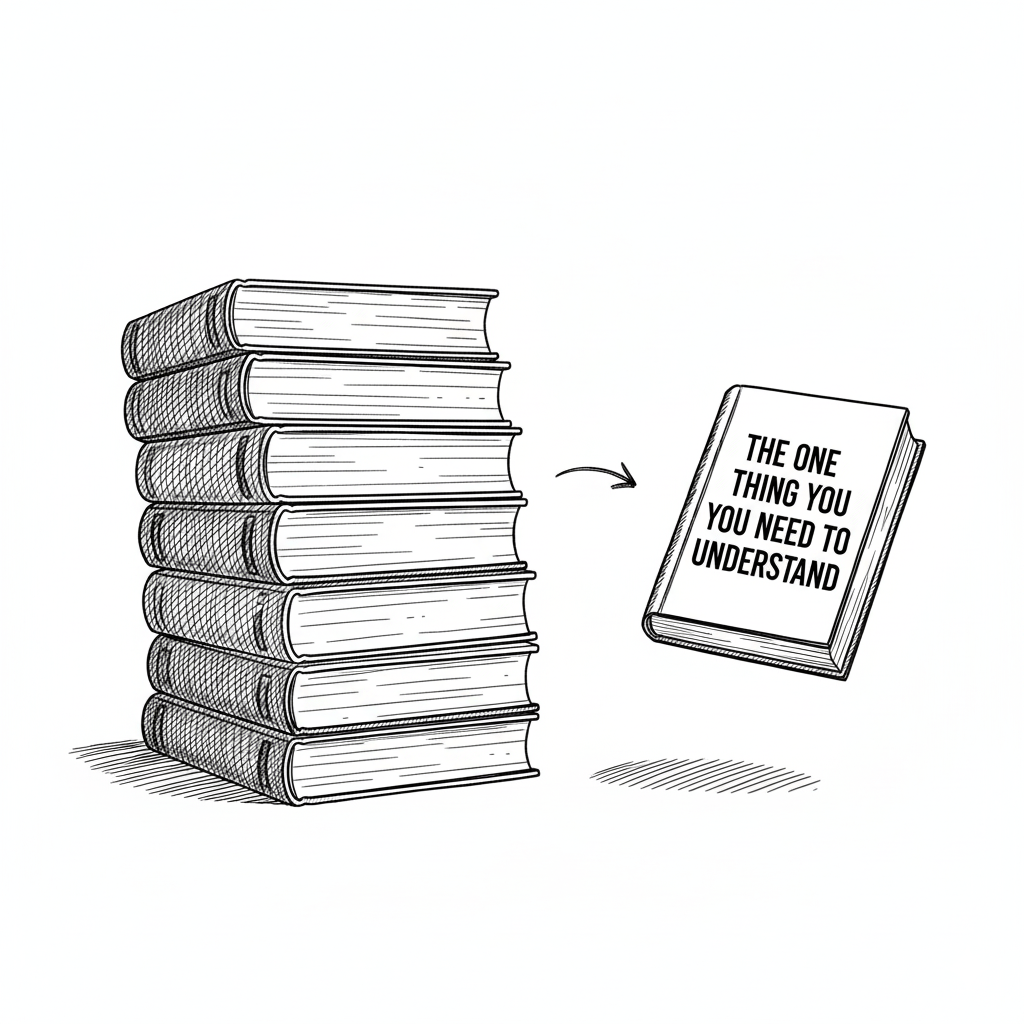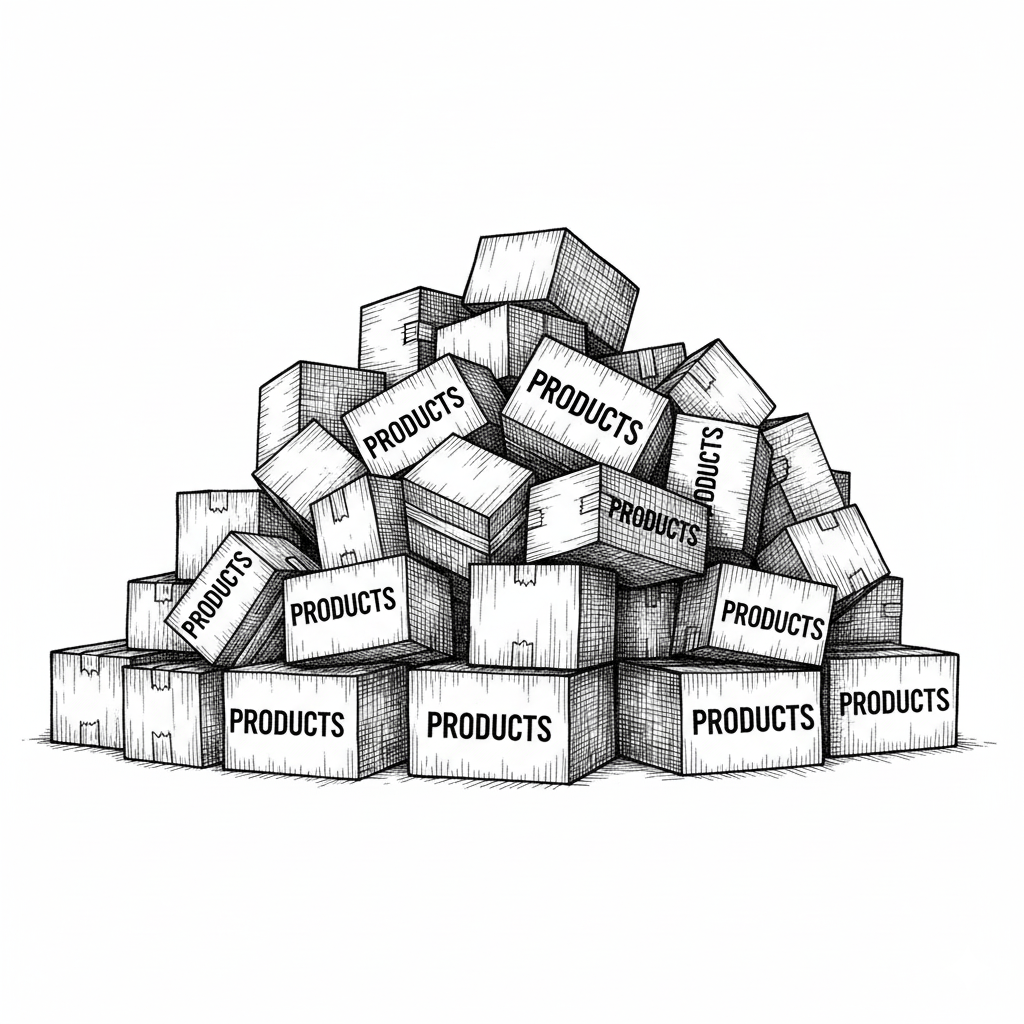- BriefBites
- Posts
- RingCentral went from $100M to $500M by cutting vendors. You're the vendor getting cut.
RingCentral went from $100M to $500M by cutting vendors. You're the vendor getting cut.
Motorola +22% services, Rapid7's six-figure platform wins, and the end of point solutions

The 60-Second Briefing
The Death Signal: Motorola's COO just said the quiet part out loud: "the days of infrastructure as a stand-alone investment no longer exists." Their cybersecurity services grew 22% while managing networks. The product is now the trojan horse for recurring revenue.
The Survivor's Playbook: Rapid7 won a six-figure deal by replacing "disparate multi-vendor tech stacks" with integrated platform + managed services. The winner wasn't the best product. It was the vendor who eliminated the most vendor management overhead.
The Extinction Event: RingCentral's CFO credits "vendor consolidation" for driving free cash flow from $100M to $500M in 2 years. Your renewal isn't at risk because your product is bad. It's at risk because you're vendor #7 in a stack that's collapsing to 3.
The One Thing You Need to Understand

Here's the pattern that emerged from Q3 earnings calls across telecom, infrastructure, and cybersecurity:
Companies aren't buying security products anymore. They're buying security outcomes with a product attached.
Motorola Solutions COO John Mollow: "Infrastructure and managed services...the care and feeding that need to be done on networks—when networks became digitized, you have to think about your cyber threat surface. We've seen our cybersecurity services up 22%."
Translation: The network sale is table stakes. The management of that network is where margin lives.
NETGEAR CEO Charles Prober: "We're integrating networking and security in a manner that will lead to a unique offering in the industry...purpose-built for managed service providers and small to medium enterprises."
Translation: We're not selling to IT buyers anymore. We're selling to MSPs who will resell our product wrapped in their services.
Rapid7 CEO Corey Thomas: "We have been steadily moving the shift...from the traditional on-premise workloads to...strategic value-added workloads that serve...the service layer, not just the technology layer."
Translation: The technology is commoditizing. The service layer is where we differentiate and retain customers.
Why this matters right now:
Your competitors aren't just building better products. They're building business models that make your perpetual license look like a VCR in the streaming era.
If your revenue model is:
One-time product sales
Perpetual licenses with optional maintenance
Deploy-and-disappear implementation
You're competing with vendors whose revenue model is:
Product as entry point, services as revenue
Subscription + managed services bundled
Never leave the customer's environment
The companies winning aren't selling better security. They're selling easier procurement and zero operational overhead.
The GTM Intelligence Stream

What's Getting Funded (And Why It Matters)
Sublime Security raises $150M Series C as "industry-first AI agents accelerate growth."
Not "AI-powered detection." Not "AI assistant." AI agents that act autonomously.
The line VCs are drawing: Does AI reduce headcount or just make existing headcount slightly more efficient?
Sublime's agents perform security tasks. That's what $150M buys you: proof that AI can replace analysts, not just help them.
Your takeaway: If your product roadmap describes AI as "co-pilot" or "assistant," you're 18 months behind the funding curve. Investors are betting on automation that eliminates FTEs, not tools that require FTEs.
Zscaler acquires SPLX to "secure enterprise AI lifecycle"
While everyone else is selling "AI-powered security," Zscaler bought the company that secures the AI itself.
This isn't defensive—it's offensive positioning. CISOs are asking: "How do I secure our AI models before they go to production?"
If your answer is "we don't have a point of view on that yet," you're not in the strategic vendor conversation.
Your takeaway: The battleground moved from "secure the network" to "secure the AI pipeline." Model protection, training data security, inference endpoint control—these are the new checklist items in enterprise RFPs.
CrowdStrike + AWS + NVIDIA expand cybersecurity startup accelerator
The hyperscalers aren't just partnering with security vendors anymore. They're building the next generation of security vendors inside their ecosystems.
This is strategic capture of the innovation pipeline. Startups born native to AWS/Azure don't need to "integrate" later. They're architected for cloud from day one.
Your takeaway: If you're not cloud-native, you're competing against startups that have distribution advantages you can't buy. The "we have an API" defense doesn't work when your competitor is pre-integrated into the customer's cloud console.
The Product & Strategy Stream

The Platform Trap (Or: Why Point Solutions Are Dying)
Qualys CEO Sumedh Thakar, Q3 2025: "CISOs are looking for a practical approach to consolidate tools where possible...They want to seamlessly unify their security tool set into a centralized risk fabric that provides an alternative to single vendor platformization."
Read that again. CISOs don't want platforms. But they also can't manage 47 point solutions.
The answer isn't "platform vs. point solution." It's interoperability.
Rapid7 CEO Corey Thomas, Q3 2025: "A great example...was a competitive 6-figure win during the third quarter with a large Tier 1 public university. We were brought in to replace their disparate multi-vendor tech stack across exposure management, SIEM and Managed Detection and Response. The customer security team faced friction trying to leverage a fragmented tool set."
Rapid7 didn't win because they had the best SIEM or the best MDR. They won because the customer was drowning in vendor management overhead.
The sale wasn't "our product is 10% better." The sale was "you can fire 4 vendor relationships."
Your Monday morning audit:
How many logins does your product require?
How many dashboards does your product add to the SOC?
How many vendor renewals does your product represent?
If the answers are "one more," "one more," and "one more," you're the vendor that gets cut in the next budget cycle.
Elastic CEO Ashutosh Kulkarni on endpoint security: "You're already deploying that agent [for SIEM collection]. And once you have it, then we go to them and say, 'Hey, it's the easy button, just turn it on.'"
This is the perfect land-and-expand motion:
Deploy for SIEM (table stakes)
Upsell endpoint protection (already deployed, just activate)
The buyer never goes through procurement again
The genius: Elastic collapsed the sales cycle from "6-month vendor evaluation" to "checkbox in existing platform."
Your product strategy question: What are you already deployed for that could expand into an adjacent control?
The lowest-friction revenue isn't the net new logo. It's the upgrade.
Voice of the Buyer

What They're Actually Saying in Budget Meetings
RingCentral CFO Vaibhav Agarwal, Q3 2025: "We are very disciplined when it comes to hiring. There is offshoring that we are using, vendor consolidation and there's increasing use of AI internally. We've driven a 5x expansion [in free cash flow]. We've gone from $100 million to $500 million."
This is your buyer's CFO. This is the conversation happening above your CISO contact.
The mandate from the top: Cut vendors. Offshore what you can. Use AI to do more with less.
When your renewal comes up, you're not competing against another security vendor. You're competing against "do we really need another vendor?"
Gartner CEO Eugene Hall, Q3 2025: "Companies were reluctant to make purchase decisions [due to tariff uncertainty]. What we see now is there's more certainty...clients are starting to make decisions they were unable to make before. They still need help with AI, cybersecurity, data analytics."
Translation: The budget freeze is thawing. Q4 and Q1 are live again.
But here's the catch: Buyers aren't just releasing pent-up demand. They're being selective. They're asking: "Which vendors help us navigate uncertainty?" Not "Which vendors have the best feeds and speeds?"
Your pitch needs to change from:
"We have the fastest detection engine"
To:
"Here's how we help you do more with flat headcount and fewer vendors"
That's the language CFOs are using. That's the language that unlocks budget.
Qualys CEO on vendor consolidation: "CISOs are looking for a practical approach to consolidate tools where possible and empower their teams to use best-of-breed where it makes sense."
Notice the tension: Consolidate where possible. Best-of-breed where it makes sense.
CISOs aren't stupid. They know single-vendor platforms have gaps. But they also know managing 47 vendors is killing their team.
The winning answer isn't:
"We're a platform, ditch everyone else"
"We're best-of-breed, integrate with us"
The winning answer is:
"We play well with others, and here's proof"
If your competitive positioning is "platform vs. point solution," you're answering the wrong question.
The customer's question is: "Does this integrate with the 6 tools we're legally obligated to keep?"
What This Means For You (The Part You'll Forward to Your Boss)
If you're in Product:
Your roadmap has a blind spot the size of a revenue model.
You're building features. Your competitors are building business models that make features irrelevant.
Questions to ask this week:
What's our services revenue as % of total revenue?
What's our ARR vs. one-time sales split?
How many customers could we upsell without going through procurement again?
If you don't know these numbers, your CFO does. And they're worried.
If you're in Sales:
Add this to every discovery call:
"How many security vendors are you managing today?"
If the answer is >10, your pitch is vendor consolidation, not product differentiation.
The case study that closes deals right now:
"Customer had 12 security vendors"
"We replaced 4 of them"
"Their SOC team now logs into 3 dashboards instead of 12"
"They reduced vendor management overhead by 30%"
That story beats "we have 2ms faster detection" every single time.
If you're in Marketing:
Your positioning is solving 2020's problem.
2020: "We stop threats faster" 2025: "We reduce the number of tools you have to manage"
Audit your homepage right now:
How many times does it say "threat," "detect," "protect"?
How many times does it say "consolidate," "integrate," "simplify"?
If the first number is higher, your messaging is 5 years old.
If you're in GTM Strategy:
You have 6 months to answer this question:
"What's our play when customers consolidate from 12 vendors to 3?"
Are we one of the 3? Or are we one of the 9?
If your answer is "we have great technology," you've already lost.
The vendors surviving consolidation aren't the ones with the best tech. They're the ones with:
Broadest platform coverage (even if not best-in-class everywhere)
Deepest cloud integrations (not just APIs)
Services revenue that locks customers in
Business models that make switching painful
You need a consolidation strategy. Not a product strategy. A business model strategy.
The Watchlist

Upcoming Events:
AWS re:Invent (Dec 1-5) – Prediction: Major AI security service announcements that commoditize point solutions
Black Hat Europe (Dec 8-11) – Watch for: Managed service provider partnerships, consolidation themes
Funding to Track:
Any Series A/B with "AI agent" or "autonomous" in the description
Any acquisition of managed services companies by product vendors
Any partnership between hyperscalers and security startups
The One Sentence Summary
The cybersecurity business model shifted from selling products to selling products-wrapped-in-services, and if your revenue still comes from perpetual licenses, you're selling something buyers don't want to buy anymore.
Forward this to your exec team with the subject line: "Are we one of the 3 vendors that survive consolidation?"
Data sources: Motorola Solutions Q3 2025, NETGEAR Q3 2025, Rapid7 Q3 2025, Qualys Q3 2025, RingCentral Q3 2025, Gartner Q3 2025, Elastic Q3 2025, plus funding announcements from Sublime Security ($150M), CrowdStrike/AWS/NVIDIA partnership, Zscaler/SPLX acquisition.